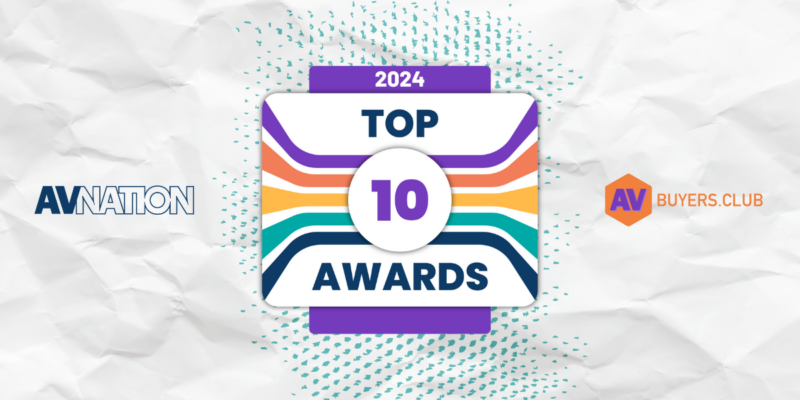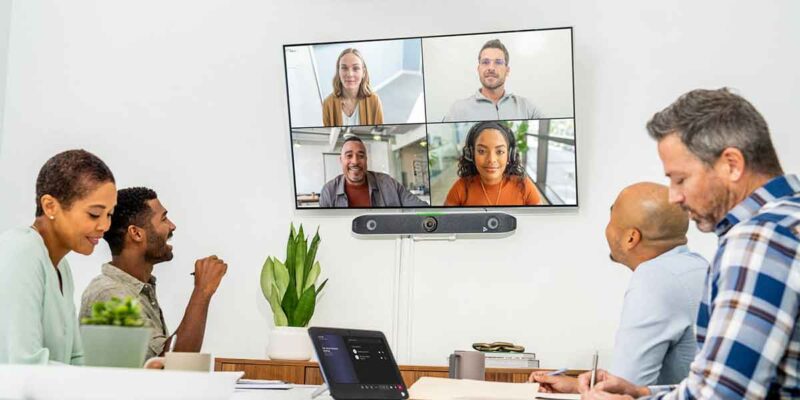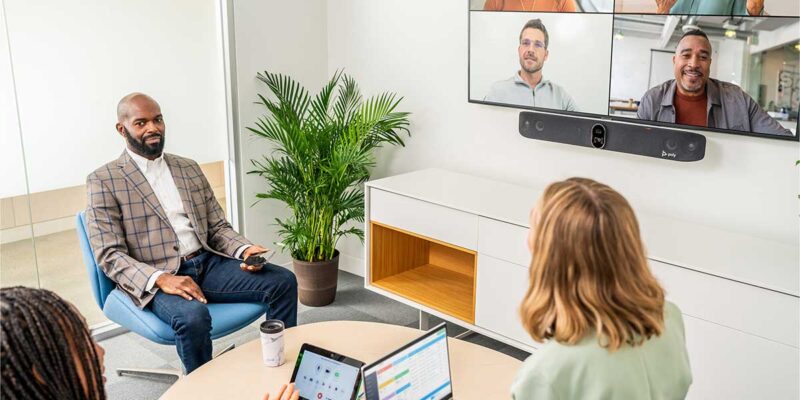Hybrid Working and the Next Normal: My Thoughts on Poly’s New Study
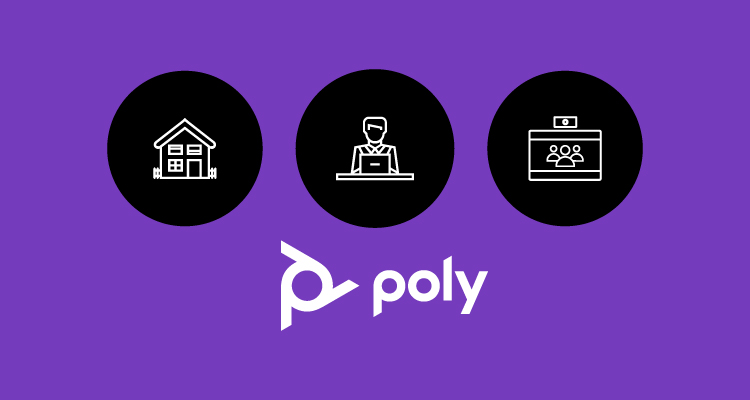
I received an email last week telling me about Poly’s (formerly Plantronics and Polycom) latest virtual event, introducing its study on the market. The report, dubbed “Hybrid Working: Creating the ‘Next Normal’ in Work Practices, Spaces and Culture,” was made to “highlight the shift in focus from place of work to purpose of work as businesses redesign operations and reinvent ways of working in response to COVID-19.”
It piqued my interest immediately, but I felt as if I could nearly make predictions for what this would tell the AV community: Yes, the place in which you work is important because who can focus on work when you’re not in an ergonomic setting? BUT — does that ergonomic environment have to be in an office? We’ve been in the midst of a pandemic for going on five (?) months now, and the vast majority of us (save for AV installers/integrators) have been working from home. I can tell you that a good work space can be set up just about anywhere given it’s a distraction-free environment.
Obviously, companies are seeing that this type of work-from-home, Zoom-calls-to-check-in-and-make-sure-nobody-is-watching-“Friends”-on-HBO-Max-all-day method can work! So, are your CEOs going to rush you back to the office post-COVID when they can save money by keeping you at the house without risking productivity? Probably not, folks!
Be that as it may, I see the purpose of Poly’s report. Without solid numbers from a study to back up my findings (gleaned entirely from personal experience) above, it’s just speculation. Speculation isn’t what drives an industry forward, and it also isn’t what supports company-wide decisions. However, a study will.
So, without further ado, here’s a little bit about the nitty-gritty numbers and what I learned from Poly’s virtual event that helped break this down a little bit.
What even is a workplace?
Darrius Jones, EVP of strategy marketing and innovation and acting CMO of Poly, began the event by talking a little about some of the new perspectives Poly gained from this study.
“Whether you’re a factory worker or in the office, everyone’s definition of the workplace has changed,” Jones said.
But when it comes to working from home, change isn’t necessarily a bad thing — as long as it’s not making workers unproductive.
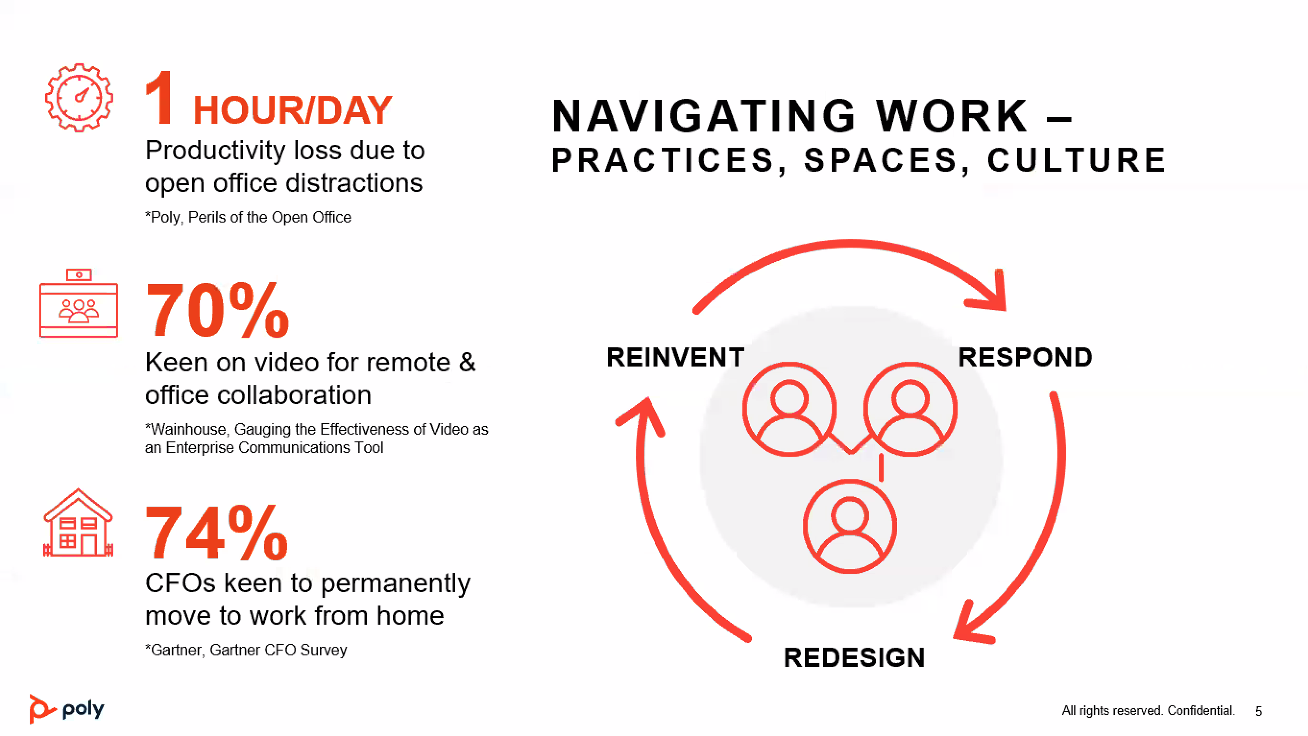
Note the whole 74% of CFOs are into permanently moving to this working-from-home thing, distractions and all. But — the way to best navigate those distractions is by reinventing, responding and redesigning work-from-home culture. More on that later.
Jones mentioned how he has struggled with building an ergonomic, functional workplace at his home. He said he knows it’s hard — and mentioned that his kids complained that he would always take his calls on speakerphone, and that they could hear every word.
Basically, the moral of the story: Distractions exist when we work from home. It’s one of the biggest problems. But is it worth giving up the flexibility remote workers have right now?
“Whether I have a cold or COVID-19, I should have that same flexibility,” said Jones.
Not that I would be trying to work if I (Steph) had COVID, but I get his point. If someone calls me in a tizzy over something at work, I should have the flexibility and opportunity to help from home if I’m not feeling my best! No need to potentially infect a whole office of people.
Mastering the environment (how????)
What we have learned so far: Working from home is working a lot better than people thought it would. Company higher-ups are considering making this a permanent change even after the pandemic runs its course. But how can tech, and specifically AV tech, help?
“Tech is going to give people the confidence to do what they need to do no matter where they’re at,” Jones said.
He paused for a moment to discuss ways that we are not taking advantage of what’s available to us. He first pinpointed that, when on a Zoom or other video call, it’s important to actually be on video. Why? In his personal experience, Jones has found his messaging was more effective when people could actually see what he was saying.

But on the other hand, it’s difficult to incentivize people to get excited about more virtual meetings. The fatigue is real.
How we rectify that, Jones added, is by shifting the culture and by “bringing people in from disparate workforces in meaningful ways.”
So, next question: What will the new environment look like?
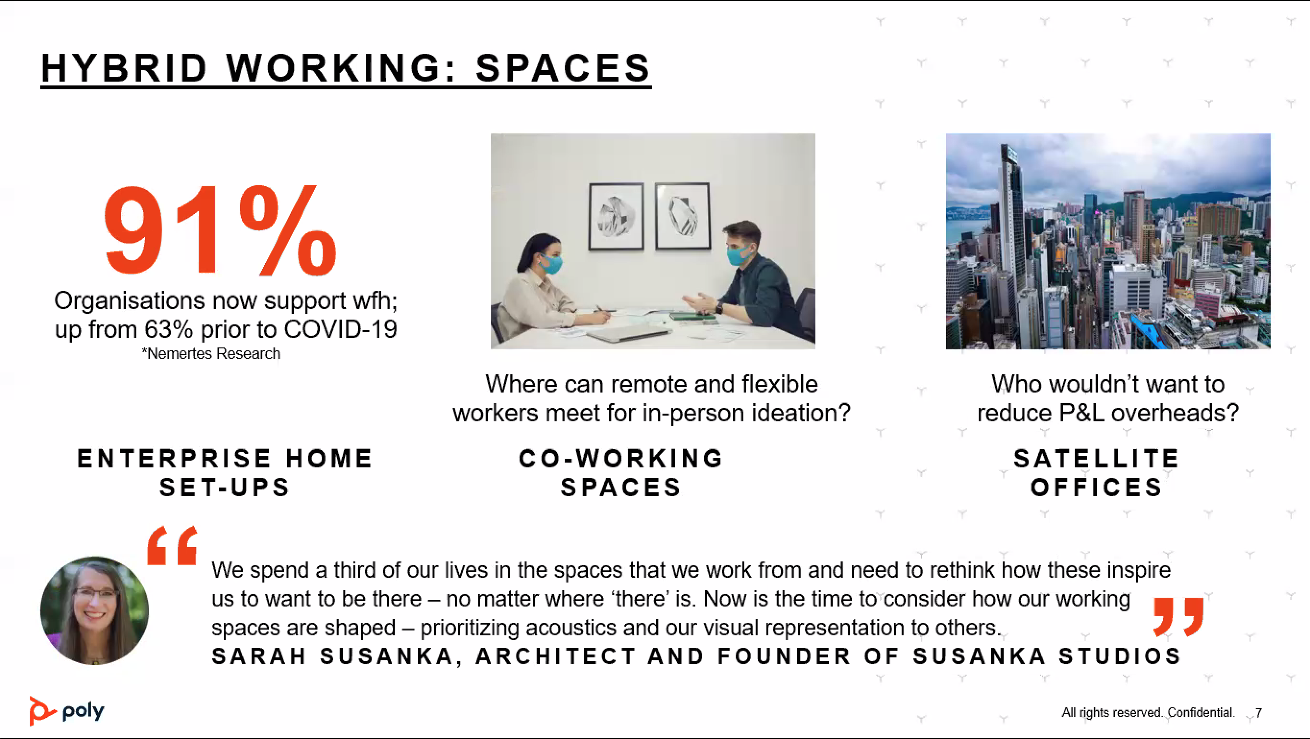
According to this part of the study, contributed by Sarah Susanka of Susanka Studios, the new environment looks like a hybrid of working from home but with memberships to things like co-working spaces and satellite offices for use when needed. Of course, there are exceptions to the rule, but companies are overwhelmingly seeing how smoothly operations can go even as work mostly takes place from the comfort of people’s homes.
Hybrid working can take many forms, though, so it can be best thought of as an umbrella term. See the below:
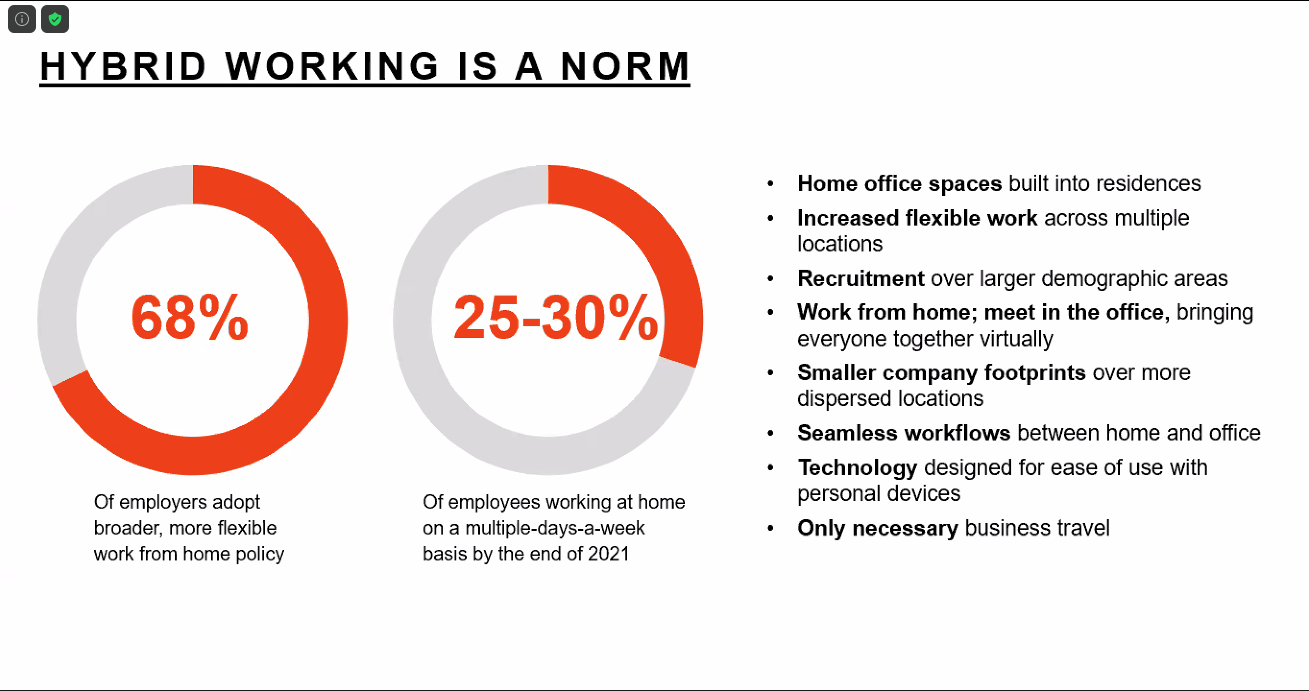
Things that will be ~trending~ in the next year
Every great market report comes with not only hard data but also predictions gleaned from said data. Poly’s report concludes with a few trends we may expect to see from this shift to hybrid working over the next year.
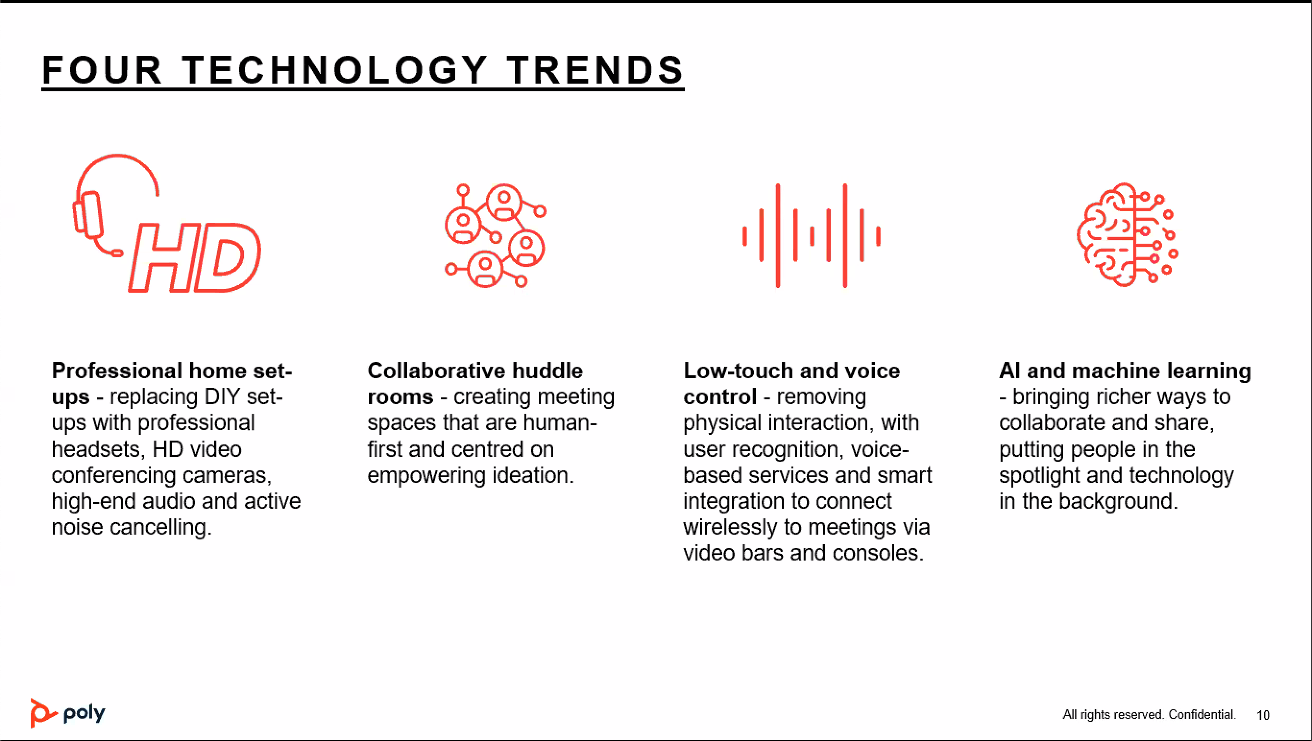
These are the pockets that Poly argues are going to change the game when it comes to building technology to fit this new workforce. Is our industry doomed? No. In AV, every great product starts with a problem that needs technology to solve it. And the above are the problems: not-great audiovisual quality from our laptops, huddle rooms that weren’t created with today’s health regulations in mind, shared office solutions that require touch and products that don’t learn our habits and respond to them. The solutions to these problems are going to include the AV products that push us forward.
Here is a link to Poly’s full study, in case my high points weren’t good enough for you.


